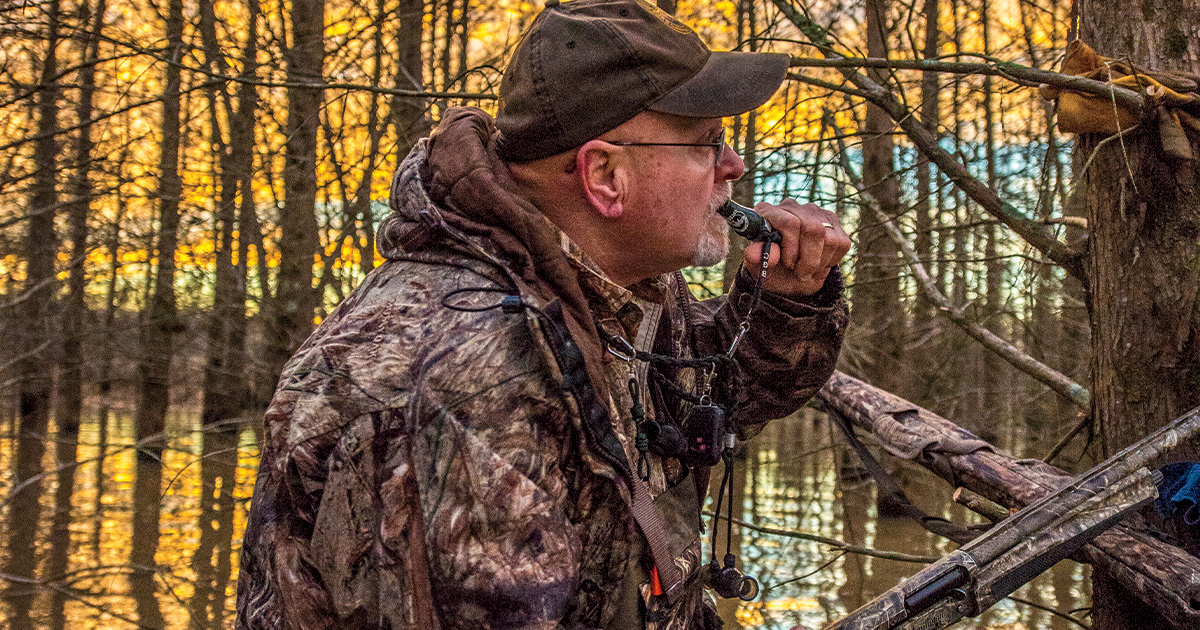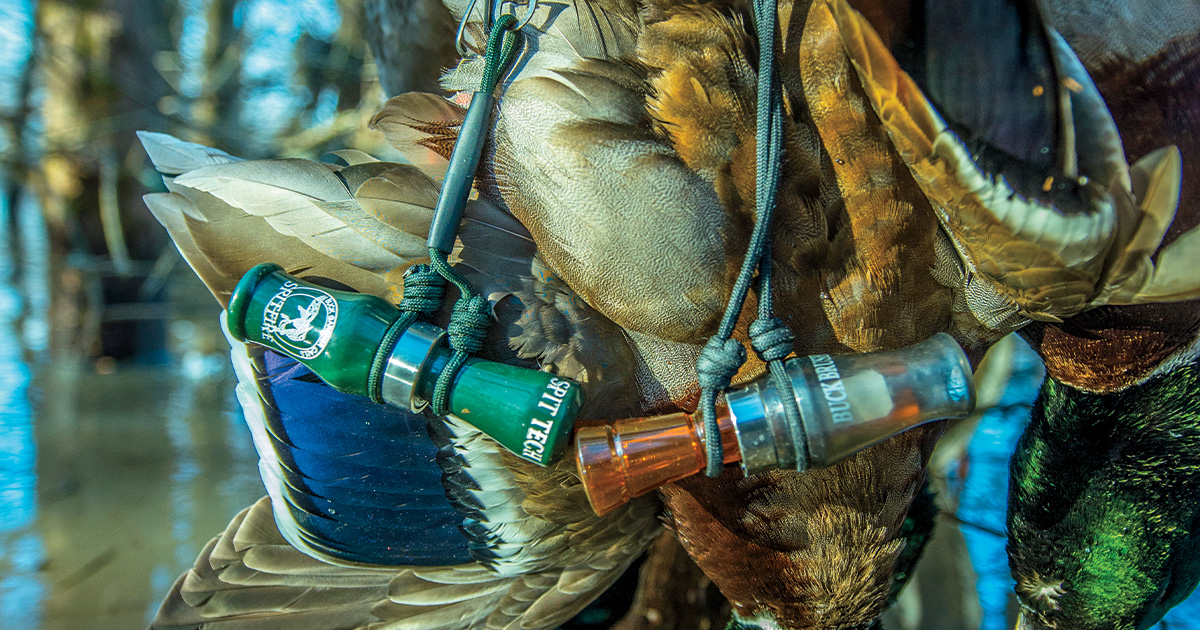Calling Basics
Champion caller Buck Gardner explains how to get started
Champion caller Buck Gardner explains how to get started

By Teresa Milner

Buck Gardner says beginning callers should master the basic quack before moving on to more advanced calls.
You need to know how to add and subtract before you can do calculus. It’s the same with calling ducks—if you want to be a great caller, you need to master the basics first. Here’s some advice for beginning callers from Buck Gardner, the founder of Buck Gardner Calls and a world champion duck caller.
Gardner says all novice callers should learn the basic quack first. Master this call, and all the other calls will come more naturally. Start by holding the call in your nonshooting hand. Put the small end of the call toward your mouth, holding it with your thumb and index finger. Use your mouth to create a seal against the edge of the call as if you were drinking out of a soda bottle. Gardner says to start with the tip of your tongue pressed up against the back of your bottom teeth and then push air through the call.
“It’s all about air control,” Gardner explains. “Don’t puff your cheeks out and blow. Use your diaphragm. If you’ve ever heard a quarterback calling a signal, he calls out hut, hut. He’s not blowing air; he’s using those deep muscles to call.” If it helps, you can say a word such as hut or quit. Again, the important thing to remember is to force air into the call as if you’re singing from the deepest part of your belly. And don’t forget to give your quack a distinct ending. “Ducks don’t go qua qua qua, Gardner says, but quack, with a pronounced k at the end.
Gardner says that ducks, like people, have lots of different ways of communicating. “You have to know how to talk to different groups of ducks,” he says. After learning the basic quack, beginning callers should learn the greeting call and the comeback call.
The greeting call is a series of five to seven steady, even notes that starts strong and high and gets lower and slightly softer at the end. Use it when you first see ducks at a distance. Keep it smooth and steady. Imagine someone sitting at a table waiting for their friends to arrive, calling, “Hey guys, over here!”

A comeback call is more urgent-sounding than a greeting call. It’s a short and fast call with rapid, pleading notes. Use the comeback call when you’ve got a group of ducks that acts like they want to decoy but haven’t committed. Repeat it a few times to get the ducks’ attention and draw them toward your location. Imagine a mom or dad yelling at a child before he runs into the street: “Hey! Get back here!” Add increasing emphasis and aggressiveness as you make subsequent calls.
Gardner says a lot of people never learn good technique to begin with, and their calling suffers. “Have fun learning the right way,” he advises. One of the ways he teaches calling to younger kids is by using a pintail whistle. It’s a simple way to learn the basic concept of forcing air from your diaphragm. Above all, practice as much as you can. Gardner says that when he was learning he practiced any chance he got.
Ducks Unlimited uses cookies to enhance your browsing experience, optimize site functionality, analyze traffic, and deliver personalized advertising through third parties. By continuing to use this site, you agree to our use of cookies. View Privacy Policy